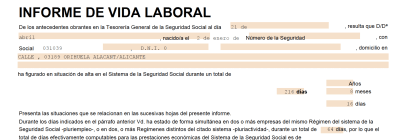The act of work conciliation is sometimes unknown, but it is an indispensable step for any demand in that area. Here we give you the details of what it is and the conditions it must meet.
What is the act of labour conciliation?
The act of labour conciliation is an essential step required by Spanish legislation so that, before going to court, the worker and employer can resolve their differences after a dismissal. In it, each of the parties indicates what their claims are and, in case of agreement, any type of claim would be extinguished. This process is managed by the mediation services dependent on the Labour ministries of each Autonomous Community.
The idea is to try to save the passage of the judicial route. The truth is that this circumstance is a minority and, most of the time, it is a simple procedure. But it is a mandatory procedure to go to court and, in addition, it has valued time limits. If this period is exceeded, there will be no legal action for the worker.
The steps of an act of labour reconciliation
The act of conciliation is made at the request of a part, specifically of the worker. Once you have received the letter of dismissal and the finiquito, you must sign and record your non-compliance. From there, you can start the process, with the peculiarities of employees or representatives. These are the steps classified chronologically:
1. Presentation of the conciliation ballot to the SMAC
First of all, the worker has to fill out the ballot and present it to the Mediation and Arbitration Service (SMAC) of the Autonomous Community. Although the name will vary depending on the place, the organism performs the same functions. To do this, the worker has 20 working days from the communication of the dismissal.
The conciliation ballot must state the disagreement and, likewise, the claim made to the company. This can be only economic or, also, readmission. Remember that there are unfair dismissals and null dismissals, depending on whether or not labour regulations are not complied with.
2. Receipt of the conciliation ballot
Once the worker covers the ballot, the SMAC communicates to the company its existence and the demands. In this case, the company may, before the act of conciliation, try to negotiate with the worker by totally and partially accepting his demands. It is not the most frequent, but, in case of agreement, the process could be closed at this point with agreement.
The autonomous administration has the obligation to carry out the communication in a timely manner. In the event that this is not the case, the company does not have to be aware of the worker’s demands. Therefore, it is a process that can take days, but it will depend on the agility of the administration and connectivity.
3. Celebration of the act of labour conciliation
The celebration of the conciliation act is carried out before the SMAC when there has been no prior agreement. It may happen that both parties reach an agreement, that no agreement is reached or that one of the parties does not show up. If the employer does not show up for the act, it is enough for the mediators to stamp the ballot; now, if the worker does not do so, it is understood that he renounces his initial claims and the process ends there.
There are numerous assumptions, but you do need some kind of advice, especially if you intend to reach an agreement. Otherwise, it will be enough for the company to wait for the judicial process. This is a strategic decision, so you must take into account what to do.
4. Opening (or closing) of the judicial route
When there is a written disagreement between both parties, it is time to go to court before the Social Courts. The act of labour conciliation, although it is unusual, is considered necessary. As an anecdote, we can say that, even before the judgement itself, it is possible to reach some kind of agreement, but the judge should validate it.
The judicial route is the most expensive, if it is lost. From the company’s perspective, a prior partial agreement may be preferable to a contrary judgement. It is not only the amount demanded, but also all the money that is spent associated with the process.
In short...
Knowing the act of labour conciliation serves to monitor the processes and claims for dismissal and act with agility. Are you an entrepreneur and need a reliable labour advisor? At Asesoría Orihuela Costa we can help and represent you. Contact us without obligation!











